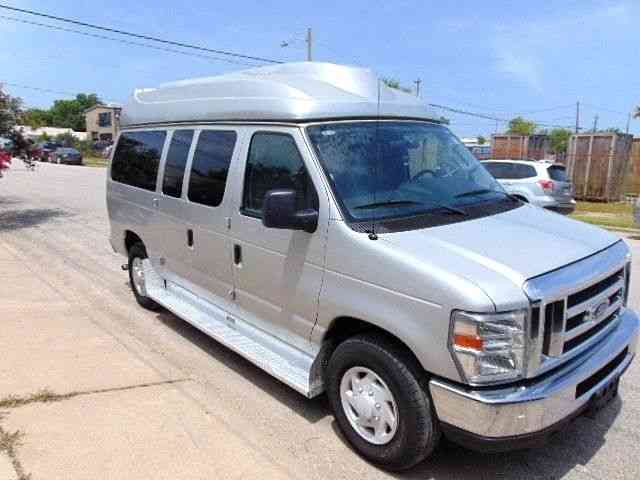A Brief Introduction to the Ford E250
The Ford E250 is a versatile and reliable full-size van that has been a staple in the automotive industry for decades. With its spacious interior, powerful engine, and robust construction, the E250 has become a popular choice for various commercial and personal uses.
Why Wheel Nut Torque Matters
- Ensuring Safety: Properly torqued lug nuts are crucial for the safety of both the vehicle and its occupants. Insufficient torque can lead to loose or detached wheels, resulting in accidents and potential injuries.
- Preventing Wheel Damage: Over-tightening lug nuts can cause excessive stress on the wheel studs, leading to thread damage or even stud failure. On the other hand, under-tightening can cause the wheel to wobble, leading to uneven tire wear and potential damage to the wheel hub.
- Optimizing Performance: Correctly torqued lug nuts help maintain proper wheel alignment, ensuring smooth and balanced driving. This improves overall vehicle performance, handling, and fuel efficiency.
- Manufacturer Recommendations: Each vehicle, including the Ford E250, has specific lug nut torque specifications provided by the manufacturer. Adhering to these recommendations is essential to maintain warranty coverage and ensure the vehicle operates as intended.
In this article, we will delve into the lug nut size and torque specifications for the Ford E250, providing you with the necessary information to properly maintain and care for your vehicle’s wheels. So, let’s dive in and explore the world of lug nuts and torque for the Ford E250!
Lug Nut Sizes for Ford E250
When it comes to the lug nut sizes for the Ford E250, it’s important to note that they can vary depending on the trim level, engine, and even the generation of the vehicle. Here, we will provide you with a comprehensive breakdown of the lug nut sizes for different trims/engines and generations of the Ford E250.
Lug Nut Sizes for Different Trims/Engines
| Trim/Engine | Lug Nut Size |
|---|---|
| E250 Base (4.6L V8) | 14mm x 2.0 |
| E250 XL (4.6L V8) | 14mm x 2.0 |
| E250 XLT (4.6L V8) | 14mm x 2.0 |
| E250 Base (5.4L V8) | 14mm x 2.0 |
| E250 XL (5.4L V8) | 14mm x 2.0 |
| E250 XLT (5.4L V8) | 14mm x 2.0 |
Lug Nut Sizes for Different Generations
| Year | Lug Nut Size |
|---|---|
| 1992-1996 | 1/2″ x 20 |
| 1997-2002 | 14mm x 2.0 |
| 2003-2014 | 14mm x 2.0 |
| 2015-2021 | 14mm x 2.0 |
It’s important to note that these lug nut sizes are based on general specifications and may vary depending on specific configurations or modifications made to the vehicle. Always refer to the owner’s manual or consult with a professional mechanic for the most accurate and up-to-date information regarding lug nut sizes for your Ford E250.
Wheel Nut Torque Specifications for Ford E250
When it comes to wheel nut torque, it is essential to tighten the lug nuts to the manufacturer’s specifications to ensure proper wheel installation and safety. Here is a comprehensive chart detailing the recommended wheel nut torque specifications for the Ford E250, categorized by trim levels and years:
Front Wheel Nut Torque Chart
| Trim/Year | Front Wheel Nut Torque (ft/lbs) | Front Wheel Nut Torque (Nm) |
|---|---|---|
| E250 Base (4.6L V8) – 1992-1996 | 85-105 | 115-142 |
| E250 XL (4.6L V8) – 1997-2002 | 85-105 | 115-142 |
| E250 XLT (4.6L V8) – 2003-2014 | 85-105 | 115-142 |
| E250 Base (5.4L V8) – 2015-2021 | 85-105 | 115-142 |
| E250 XL (5.4L V8) – 1992-1996 | 85-105 | 115-142 |
| E250 XLT (5.4L V8) – 1997-2002 | 85-105 | 115-142 |
Rear Wheel Nut Torque Chart
| Trim/Year | Rear Wheel Nut Torque (ft/lbs) | Rear Wheel Nut Torque (Nm) |
|---|---|---|
| E250 Base (4.6L V8) – 2003-2014 | 85-105 | 115-142 |
| E250 XL (4.6L V8) – 2015-2021 | 85-105 | 115-142 |
| E250 XLT (4.6L V8) – 1992-1996 | 85-105 | 115-142 |
| E250 Base (5.4L V8) – 1997-2002 | 85-105 | 115-142 |
| E250 XL (5.4L V8) – 2003-2014 | 85-105 | 115-142 |
| E250 XLT (5.4L V8) – 2015-2021 | 85-105 | 115-142 |
Actionable Recommendations for Lug Nut Size and Torque
1. Follow Manufacturer’s Specifications
Always refer to the owner’s manual or consult with a professional mechanic to determine the correct lug nut size and torque specifications for your specific Ford E250 trim, engine, and year. Following the manufacturer’s recommendations ensures optimal safety and performance.
2. Use a Torque Wrench
Invest in a reliable torque wrench to accurately tighten the lug nuts. This tool allows you to apply the recommended torque with precision, preventing under-tightening or over-tightening.
3. Regularly Inspect Lug Nuts
Periodically inspect the lug nuts for any signs of damage, corrosion, or loosening. If you notice any issues, promptly address them by replacing damaged lug nuts or tightening loose ones to the specified torque.
4. Re-Torque After Wheel Removal
Whenever you remove and reinstall a wheel, it is crucial to re-torque the lug nuts after a short drive. This helps ensure that the lug nuts settle properly and maintain the recommended torque.
5. Seek Professional Assistance
If you are unsure about lug nut sizes or torque specifications, or if you lack the necessary tools and expertise, it is always best to seek assistance from a qualified mechanic. They can provide accurate information and perform the necessary maintenance tasks with precision.
By following these recommendations, you can maintain the safety, performance, and longevity of your Ford E250’s wheels, ensuring a smooth and worry-free driving experience.

